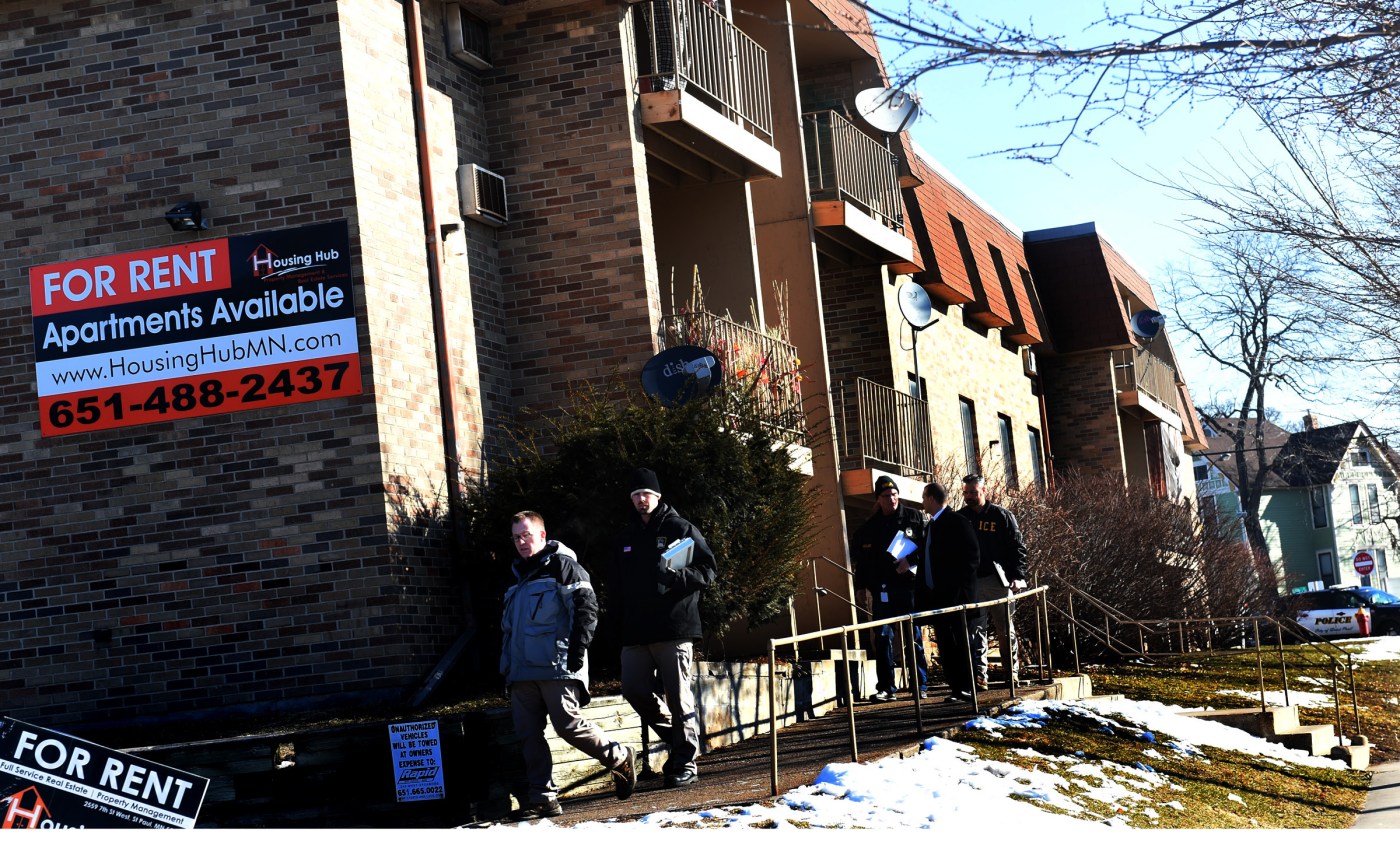
St. Paul approves $380K settlement to fiancée of man fatally shot by police
The St. Paul City Council approved a $380,000 settlement Wednesday to the fiancée of a man fatally shot by police officers outside her Dayton’s Bluff apartment building in 2017.
Markeeta Johnson-Blakney said in her lawsuit against officers and the city of St. Paul that she’d been held in a squad car for hours after Cordale Handy was killed, violating her constitutional right to be free from unlawful imprisonment.
Attorney Paul Bosman, who is representing Johnson-Blakney and her neighbor, said they were “just witnesses to the police killing of Cordale Handy.”
“They were put in the back of police cars” and Johnson-Blakney was “in agony” and asked repeatedly to be released, Bosman said.
The city agreed to settle Johnson-Blakney’s claim “to avoid the costs and uncertainty of continued litigation,” City Attorney Lyndsey Olson said in a statement. “The city remains committed to protecting the rights of all persons through respectful service.”
Kimberly Handy-Jones, the mother of 29-year-old Handy, filed a federal lawsuit, which went to a civil trial over the summer. Jurors found officer Nathaniel Younce, who fired just before officer Mikko Norman, violated Cordale Handy’s constitutional rights by using excessive force and that he wrongfully caused Handy’s death. They did not find Norman civilly liable.
The jury awarded $11.5 million to Handy’s family, a record-setting amount in the city. The city is seeking a new trial or to have the amount of compensatory damages reduced; a judge hasn’t yet issued a decision.
Johnson-Blakney and the neighbor filed a separate federal lawsuit against the city and other officers who were present. The neighbor’s part of the lawsuit is ongoing.
Officer told her it would ‘be a long night,’ lawsuit says
Cordale Handy (Courtesy of Kimberly Handy-Jones)
The shooting happened on March 15, 2017, after officers Norman and Younce responded about 2:20 a.m. to a 911 call about a female screaming at an apartment building in the 700 block of East Sixth Street, where Handy lived with Johnson-Blakney, his girlfriend of 10 years.
Johnson-Blakney and the neighbor said they talked to Norman and Younce at the back entrance to the building, and they followed as the officers left in pursuit of Handy. They also said they witnessed the officers shooting and killing Handy.
Handy was shot on Sinnen Street near West Seventh Street. About 10 minutes later, Johnson-Blakney was seen on squad car video “being dragged by her arms by two officers” while only wearing a T-shirt and underwear and being put in the back of a squad car, according to her lawsuit.
She repeatedly told an officer she wanted to go home. The officer said she’d see what she could find out, but Johnson-Blakney was not let out of the squad. The squad doors were locked from the inside and Johnson-Blakney didn’t have her cellphone.
At 3:30 a.m., a female voice told Johnson-Blakney “that it is going to be a long night … and that she will have to be interviewed,” the lawsuit said of the squad video.
Johnson-Blakney spotted her mother’s vehicle near the squad car and said she wanted to talk to her, but the officer told her at 3:34 a.m. she wasn’t allowed to talk to anyone. Johnson-Blakney said she wouldn’t talk to anyone except a lawyer.
At 4:33 a.m., “Johnson-Blakney is finally given packaged scrubs to wear over her underwear,” the lawsuit continued. She was driven to police headquarters and arrived at 5:18 a.m.
Minnesota Bureau of Criminal Apprehension agents, who were investigating Handy’s shooting, tried to interview her. An agent told Johnson-Blakney she wasn’t under arrest. She would not give a statement and insisted on calling her mother. She left the interview room at 5:56 a.m.
Officer who shot first found civilly liable
Neither officer was criminally charged in Handy’s shooting. The Ramsey County Attorney’s Office said in 2017 that Younce and Norman’s use of force was justified under the law.
The officers reported they saw Handy fall down backward, lower his gun and raise it briefly toward Norman. The officers said Handy raised the gun toward Norman a second time and they shot him 10 times, seven of which struck him when he was on the ground. Younce testified during the civil trial that he fired because Handy was pointing a gun at Norman.
Kevin O’Connor, an attorney who represented Handy-Jones with Bosman, argued that both officers were liable, but also said that jurors could find that Younce “sparked this whole thing” by shooting Handy first.
Norman was across the street and “what ended up happening is, if you were over on the other side, you don’t know where that gunfire came from and you can’t see the gun,” O’Connor said outside the courtroom. “Officer Younce shoots. Officer Norman, by instinct, is going to shoot because he thinks that the person on the ground is shooting at him, even though he wasn’t.”
Related Articles
Pedestrian killed on Coon Rapids Boulevard identified
Tou Ger Xiong memorial scheduled Saturday in Woodbury
35 anglers rescued from Upper Red Lake after ice separates from shore
Blaze at Eagan battery recycling plant early Sunday draws fire crews from 12 municipalities
Stillwater sisters held warden’s assistant job for 46 years. Now their time is up.


